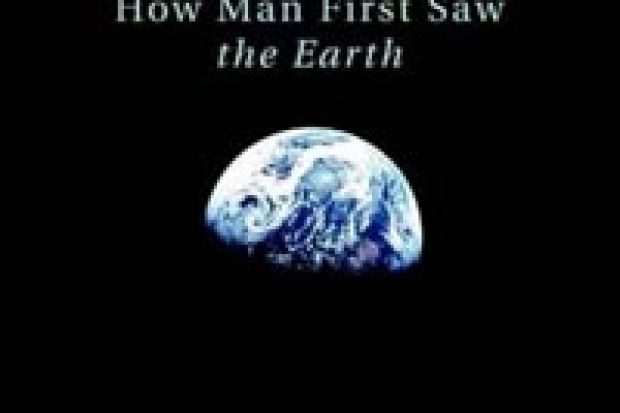Before you read on, try this. Google "Kaguya image gallery" and click on HDTV. Watch the movie of the small, blue Earth rising above the curved horizon of the grey, lifeless Moon. Evocative, no?
That little movie, taken from a Japanese orbiting moon mission earlier this year, is the nearest the earthbound can get to reliving the experience of three Apollo astronauts on Christmas Eve 1968. Bill Anders, Frank Borman and Jim Lovell, former test pilots filled to the brim with the right stuff, went the full distance to the Moon; but their mission was all orbit, no touchdown. As each orbit took them behind the satellite, they lost contact. For mission control, re-emerging meant renewing the radio link. For the crew, it meant something else: Earthrise.
They took no movies, but they did snatch still photos through the window of their capsule. Those were not the first photos of the whole Earth, but they were the first to reproduce a view seen by human eyes. They also capture the moment when the space programme turned around. It was framed as outward bound, a journey toward an endless frontier; it became about the Earth.
So argues Robert Poole in his absorbing little book. It was ripe for the writing. Forty years after the peak of interest in the Moon landings, reappraisals of the space race are in vogue. Marina Benjamin's Rocket Dreams reviews the mixed legacy of the space programme. Andrew Smith in Moondust: In Search of the Men Who Fell to Earth probed what the Apollo missions meant to him by tracking down the nine surviving moonwalkers. And David Sington's remarkable documentary In the Shadow of the Moon combines recent interviews with astronauts with footage from Nasa's archives to stunning effect. Now Poole investigates the images that may be the most important fruits of the whole enterprise.
To anyone who grew up with colour photos of the whole Earth, they are an irresistible subject for an essay on the power of the image. That blue-green globe suspended in the dark is one thing we remember from our tiny excursions into space. Humans visited another world and found it bleaker than they imagined. Even in colour, the Moon is black and white. Hanging above it - from a lunar vantage point - the Earth is a riot of colour. It shimmers and sparkles. It seems alive.
Or does it? The simple version of the significance of Earthpix has become a cliche. We went to the Moon. We saw the Earth, and that it was good. And so modern environmentalism was born. Earthrise begat Earth Day.
Like most cliches, there is some truth here. The image surely is evocative. Apart from a few astronauts, no one has seen it with their own eyes, but for the rest of us, it has become as familiar as our own faces in the mirror. The best-known Nasa photo, taken from Apollo 17 in 1972, is the single most reproduced image in human history, Poole reports.
Although the packaging of his book, and the details he narrates, leans towards this simple cause-and-effect sequence, Poole is too good a historian not to undercut it - though he does so only partially.
The straightforward portion of the book relates how the photos came to be taken. The events are recent, and it is easy to reconstruct how images of the Earth gradually became a small, but lasting, part of Nasa's mission. It was an uphill battle because, as Poole highlights, the space programme was shot through with the rhetoric of "astrofuturism".
It was time, as science-fiction writers and visionary technologists argued, for the human species to reach beyond the cradle of the Earth and set out for the stars. The Moon was to be a small step on an endless outward journey. Instead, it produced a new appreciation of the comforts of home. When the crew of Apollo 13 limped back to Earth after an explosion damaged their craft, the drama was as memorable as Apollo 11's first lunar touchdown. And the images of the blue planet underlined the hostility of, well, everywhere else.
But is the story a picture tells inscribed within the picture? Or is the way an image is read learnt, its interpretation made, not revealed? That is now the more common view. Some images, though, seem to resist that analysis. As Benjamin put it: "It was difficult not to imbue the planet with exemplariness." Difficult, but not impossible - and when an image seems so obviously powerful, effort is needed to trace the roots of that power. An Earthscape, like a landscape, does not encode an immutable message. Mountains, for instance, were not always emblems of ragged beauty, snow-capped peaks sending the heart soaring as high as their icy summits. Before the aesthetic of the sublime gained currency in the 18th century, they were generally viewed as hostile, ugly excrescences. History can account for the change.
I imagine Poole would agree, but he never quite says so. Instead he leaves the two views in tension. The images, and their capture, dominate the book. But it also contains a history of how they were constructed in a particular way. The cultural slot they fitted into was being prepared before the pictures existed. It began with the reading from Genesis the astronauts chose to relay to Earth that Christmas Eve. Then there was an existing literary and artistic tradition of imagining how the planet would appear from space. This became overlaid with a new awareness of Earth as a finite, precious voyager through an inhospitable universe. Buckminster Fuller popularised the term "Spaceship Earth" as part of a wondrously woolly manifesto for general-systems thinking in 1963, and economist Kenneth Boulding made more incisive use of the notion a few years later. Others taken with the idea included Stewart Brand, beguiled by ecology and space flight. By 1966 he was having badges printed asking why there was no picture of the whole Earth, and mailing them to Nasa. When the agency finally obliged, Brand slapped the picture on the cover of his Whole Earth Catalog.
Here, as elsewhere, the co-option of the images of Earth was part of a larger story, already unfolding. The same is true of James Lovelock's Gaia theory. As Poole relates, its originator was consulted about how to read signs of life on other planets. This led him to the notion of planetary homeostasis some years before the key images were brought back. So although it owes its origins to the space programme, and whole-Earth images helped its promotion, we would have had Gaia theory, and its development as Earth system science, in any case.
In fact, other aspects of the various space programmes are probably more important here. Ever-better Earth-observation satellites - our new macroscopes - that feed mountains of data back to civilian scientists have fuelled the development of the new sciences of global systems and global change. Their ability to observe the whole Earth by remote sensing brings much of the evidence that we now affect the environment on a global scale.
This is one possibility for a larger study of the effect of space observations of all kinds on late modern culture and consciousness. Another would be the Hubble Deep Field images showing the oldest galaxies, which have been as widely circulated in the past five years as the picture of the whole Earth was in the 1970s. The way they are read is at least as interesting as the interpretation of those earlier images.
Still, the focus on the Nasa photos of the Earth, plus a few from other space agencies, does unify Poole's book. The result is a very readable and stimulating foray into an important facet of 20th-century history, if not the last word on the subject.
THE AUTHOR
Robert Poole is a historian who specialises in 17th- to 19th-century Britain. Although his long-term academic interest is the Peterloo massacre of 1819 and the events surrounding it, he is also a keen environmentalist and space enthusiast, and the combination of those two interests led to the writing of Earthrise.
He is not worried that the book does not fall into his usual academic categories, saying that "sometimes historians do their most interesting work when they bring their experience to bear on a different field with which they have some personal connection".
Aside from writing, Poole is a passionate teacher of history whose message is very simple: "Content matters, books matter, and, as a discipline and a way of understanding the world, history matters too."
Earthrise - How Man First Saw the Earth
by Robert Poole Yale University Press, 256pp, £18.99 ISBN 9780300137668 Published 29 September 2008
Register to continue
Why register?
- Registration is free and only takes a moment
- Once registered, you can read 3 articles a month
- Sign up for our newsletter
Subscribe
Or subscribe for unlimited access to:
- Unlimited access to news, views, insights & reviews
- Digital editions
- Digital access to THE’s university and college rankings analysis
Already registered or a current subscriber? Login




